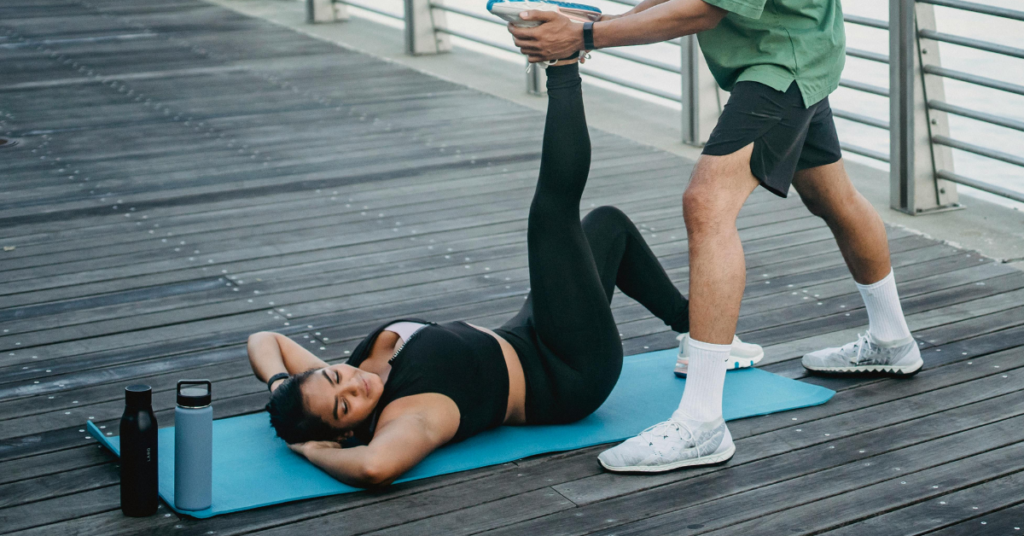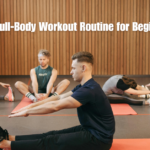Table of Contents
If you’re struggling with knee pain, incorporating gentle workouts for knee pain can be life-changing. Whether your discomfort stems from arthritis, injury, or age-related wear and tear, exercises like walking, stretching, stationary biking, and water aerobics or swimming can help reduce pain and improve mobility. These low-impact routines strengthen the muscles around your knees without adding pressure, helping you move with greater confidence and comfort.
For more safe ways to stay active, start with our essential guide: 10 Best Low-Impact Exercises for Joint-Friendly Fitness.

Why Exercise is Important for Knee Pain
Contrary to what many believe, rest isn’t always best. Gentle movement:
- Strengthens the muscles around your knees
- Improves flexibility and range of motion
- Reduces stiffness and inflammation
- Supports weight management, which reduces pressure on joints
It has been largely demonstrated that regular physical activity could help ease osteoarthritis and chronic joint conditions.
Additionally, movement tends to maintain lubrication in the joints, while immobility tends to cause stiffness and further pain. Eventually, exercise can alleviate these symptoms, rendering daily life less arduous and painful.
Best Gentle Workouts for Knee Pain
Let’s dive into effective exercises that are safe and beneficial for knee pain.
1. Walking
Walking is low-impact, easy to adapt, and can be done anywhere.
- Start with flat surfaces
- Wear supportive shoes
- Aim for 20–30 minutes, 3–5 times a week
As your knees strengthen over time, consider gradually increasing the distance and speed of your walks. Fresh air and a change in scenery have also been shown to enhance emotional well-being and mental clarity.
Looking for more options to ease into joint-friendly movement? Don’t miss our article on the 10 Best Low-Impact Exercises for Joint-Friendly Fitness.
2. Water Aerobics or Swimming
Exercising in water takes the pressure off the joints while providing resistance.
- Improves range of motion
- Builds strength safely
- Keeps heart rate up
Pool workouts are an excellent way to exercise if you suffer from arthritis or severe knee pain: they are gentle and strong.
3. Seated Leg Lifts
Great for strengthening your quads and improving stability.
- Sit in a sturdy chair
- Lift one leg until it’s straight
- Hold for 3–5 seconds, lower slowly
- 10–15 reps per leg
4. Resistance Band Work
Using bands adds resistance without strain.
- Sidesteps
- Glute bridges
- Clamshells
These help stabilize the hips and knees.
5. Stationary Biking
Gentle pedaling strengthens leg muscles with minimal pressure.
- Keep resistance low
- 10–30 minutes depending on your comfort
Gentle Strength Training for Knee Support
Building efficiency around the knees gives them a very good ability to help movement.
Examples:
- Wall sits (with a chair nearby for support)
- Modified squats (not too deep)
- Step-ups (on low steps)
Using weights as light as possible or at all might seem counterproductive. But if we’re looking at long-term benefits, then consistency counts far more than intensity.
Stretching for Knee Support
Stretching may aid in keeping the different muscles aligned and flexible to reduce body stiffness.
Top Stretches:
- Hamstring Stretch
- Calf Stretch
- Quadriceps Stretch
- Iliotibial Band (IT Band) Stretch
Tips:
- Warm up before stretching
- Never bounce during stretches
- Hold each stretch for 20–30 seconds
- Focus on breathing to enhance flexibility
Tips for Safe Exercise with Knee Pain
- Always warm up and cool down
- Avoid high-impact moves like jumping or deep squats
- Listen to your body—if it hurts, stop
- Use a knee brace or compression sleeve for support
- Work out on soft surfaces (grass, mats)
- Stay hydrated to support joint lubrication
Daily Movement Ideas to Stay Active
You don’t need a gym to stay moving. Try:
- Gentle Yoga
- Tai chi
- Gardening
- Housework
- Light dancing
- Short walks during breaks
- Chair yoga or desk stretches at work
These keep you active and protect your knees.
Recovery and Rest Days
Even knees also need a break to rest and recover. This would not be doing anything but
- Alternating exercise days
- Focusing on stretching or mindfulness routines on off days
- Taking warm baths or using heat therapy
- Gentle foam rolling (avoid the knees directly)
For the ones who have not tried silk screening before, experimenting can uncover delightful things.
When to See a Doctor or Physical Therapist
Exercise is generally safe, but consult a professional if:
- You feel sharp or persistent pain
- Your knee swells or locks
- You’re recovering from surgery or injury
Physical therapists create individualized recovery and strengthening regimens for their patients. These movements are suitable for their condition and provide fitness benefits.
There is a variation of physical therapy workouts for knee rehabilitation that one can do at home or under the supervision of video guidance.
Wrapping Up: Gentle Fitness That Works
Having knee discomfort certainly doesn’t prevent people from exercising. If approached properly, movement can actually be safer, less painful, and improve general health.
Start small, be consistent, and gradually build strength. Your result isn’t merely safe; it’s probably the most effective therapeutic method for feeling good.
That’s right, movement is a joint oil, so don’t stop moving and support those knees the healthy way.




